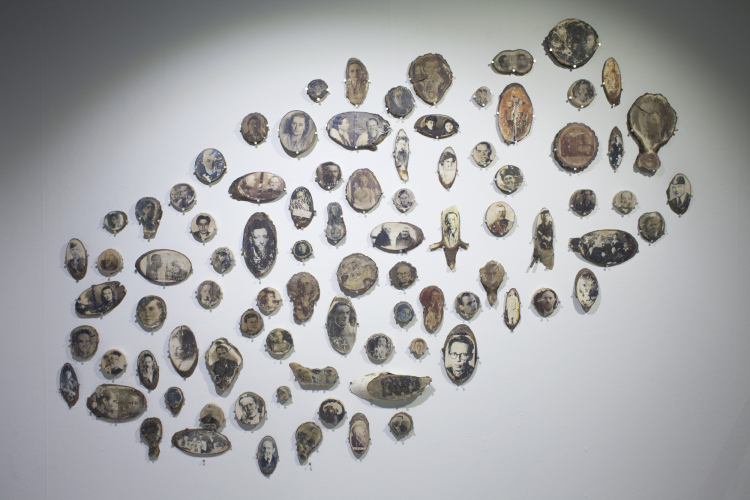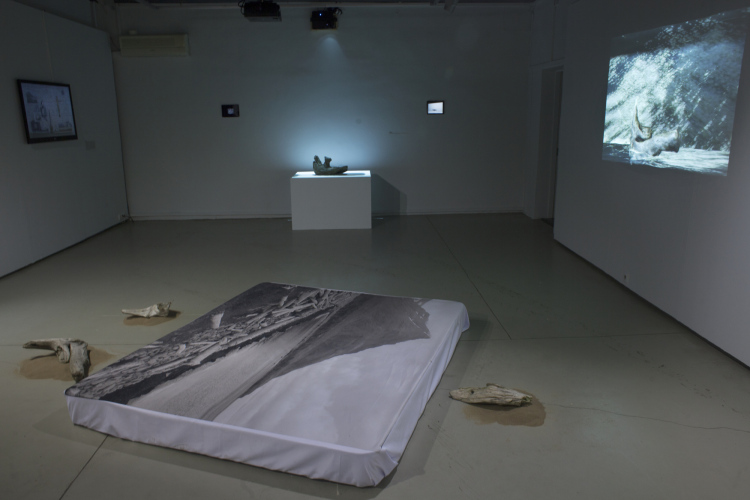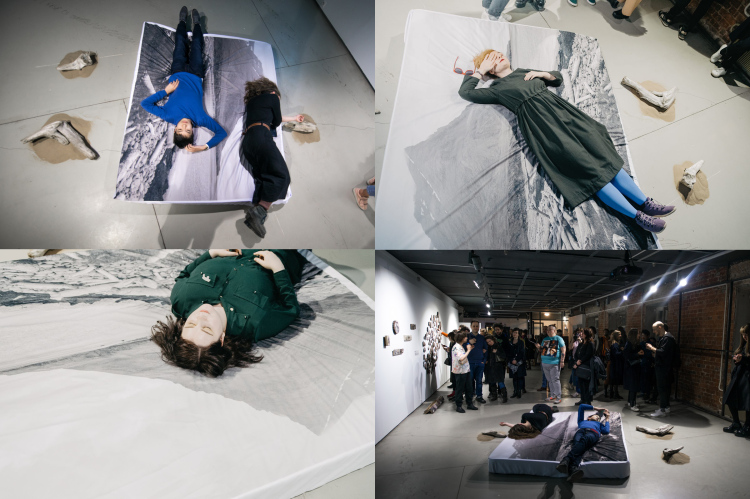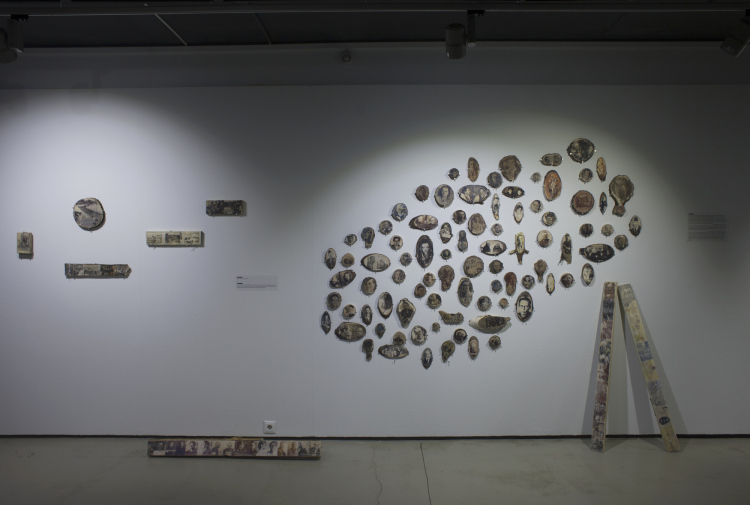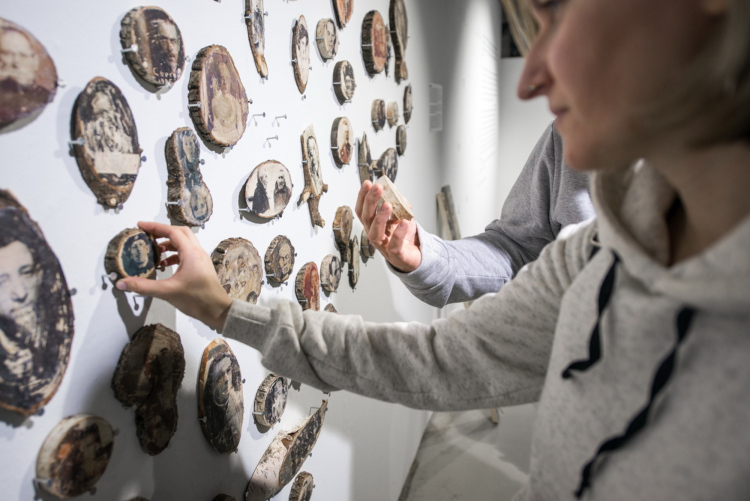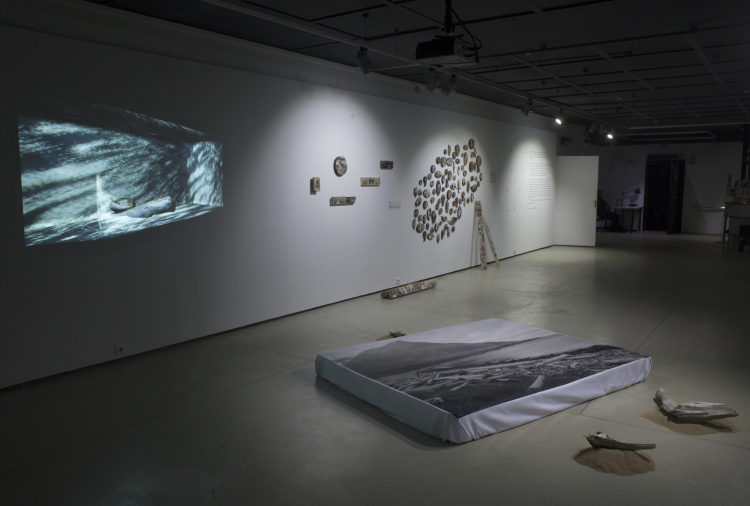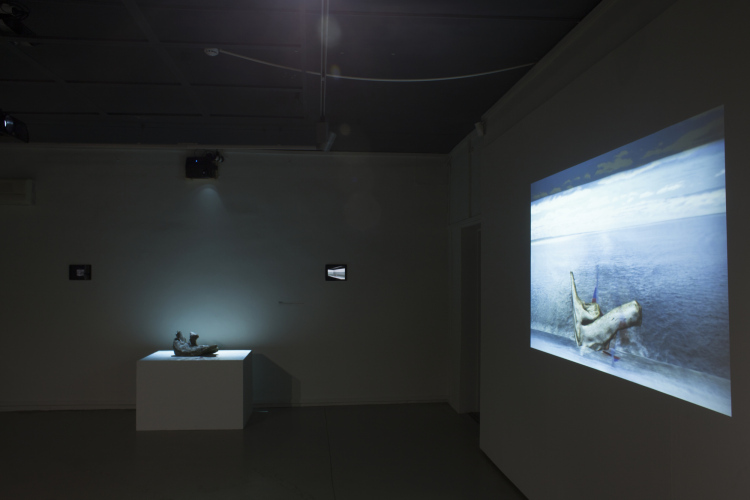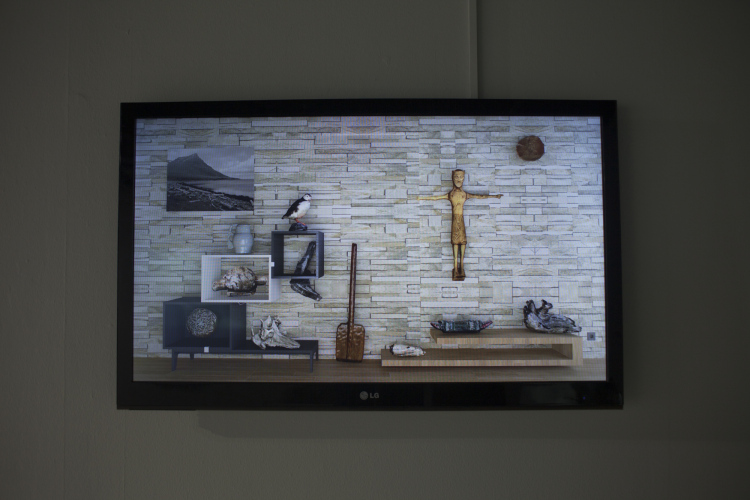-
-
Repatriatsiya (2019) (текст на русском – ниже)
This project was based on the scientific research on the origin of driftwoods found along the coast of Iceland. In the mid-20th century, the number of driftwoods on the Icelandic shore increased significantly, and, according to researchers specializing in dendrochronology, the rise resulted from the growth of the lumber industry in Siberia. Around that time, prisoners of the Gulag were the main workforce for logging activities in the regions along the Yenisei river, from which the majority of driftwoods in Iceland came from via the Arctic, according to the researchers. In summer 2018, I travelled to Iceland, picked up pieces of driftwoods on the shore and then carry them back to Russia. The exhibition space demonstrates a symbolic juxtaposition between the involuntary flow of the lost woods and the movement of the people, who fell victim to the political repression in the Soviet Union.
“Trees in Siberia fall on the ground. Sometimes, they fall to the rivers and flow adrift, eventually entering into the Arctic Ocean, where they get frozen. The trees in the ice flow further and further, and after six-seven years or longer, they sometimes cross the Atlantic Ocean and reach the shores of Iceland, where local Icelanders highly value the trees from the Ocean, as few trees grow in the island. In the past, such driftwoods were used for the construction of houses, churches and fences, as well as the production of household items and even religious ones. Until the 90’s, for many Icelanders, imported woods were expensive. So, they sometimes strolled for the trees from the ocean, from Siberia. Rekaviðar is the word for “driftwood” in the Icelandic language. Today, trees continue to drift from Siberia to Iceland.” — an excerpt from the text describing the installation with the driftwoods:
Technical information:
The exhibition starts with portraits of former political prisoners printed on slices of woods. A short biography of a former prisoner was also written on the other side of each portrait. Portraits, documents related to the repression and pictures from labor camps are also printed on used wooden planks. A photo of timber rafting, which caused a great number of woods to get lose, was also printed on a slice of wood.
After the pictures printed on the slices, the exhibition continues with a couple of short animation pieces made from 3-d scans of driftwoods, video footages from Yenisei and sound of Iceland. Next to the video pieces, a driftwood is placed on table, on which video footages of the Yenisei river are projected. Across the video projection on the driftwood lies a mattress with a bed sheet with a photography of the Icelandic coast, from which the author brought the driftwoods, some of which were also placed around the mattress.
>Another video “Virtual Souvenir from Iceland” was made from 3D scans that the author made during the trip in Iceland. He made some scans of old household items made from driftwoods in local museums, and video footages from the Yenisei river are again projected onto those scans in the video from time to time. The author also scanned typical Icelandic objects — a stuffed puffin and a whale’s bone. The replica of Ufsakristur, the oldest existing icon of Christ in Iceland, was also scanned and put in the video, but a museum’s director said that the icon should be made form Icelandic birch, though formal research had not been conducted. Thus, the footages from the Yenisei were not projected on the surface of this sacred object in the video.
Репатриация
Основой проекта стали научные исследования происхождения древесины, выброшенной океаном на берега Исландии. В середине двадцатого века её количество увеличилось. По мнению некоторых исследователей, этот всплеск можно связать с организацией исправительно-трудовых лагерей и массовым привлечением заключенных к работам на лесозаготовках в Сибири. Прошлым летом художник отправился в Исландию собирать коряги, чтобы вернуть их в Россию. Икуру Куваджима: «Деревья в Сибири падают. Иногда они попадают в реки и плывут по течению. Уплывают в Арктику, затем замерзают. И дальше плывут и плывут во льдах по Северному океану. Спустя шесть-семь лет и больше они иногда переплывают Атлантический океан и оказывается у берегов Исландии, где их высоко ценят местные жители, потому что там растет мало деревьев. До 90-х годов прошлого века многие исландцы не могли себе позволить покупать дорогие строительные материалы, поэтому специально выходили на берега за древесиной из моря, из Сибири (rekaviðar на исландском языке — дрейфующее дерево)». При помощи визуальных и звуковых наложений выставка создаёт образ этого долгого дрейфа. В пространстве выставки происходит символическое сращение безвольного плаванья срубленных и утерянных деревьев с перемещением людей, попавших под советские репрессии. (Текст — Александра Киселева)
-
-
-

